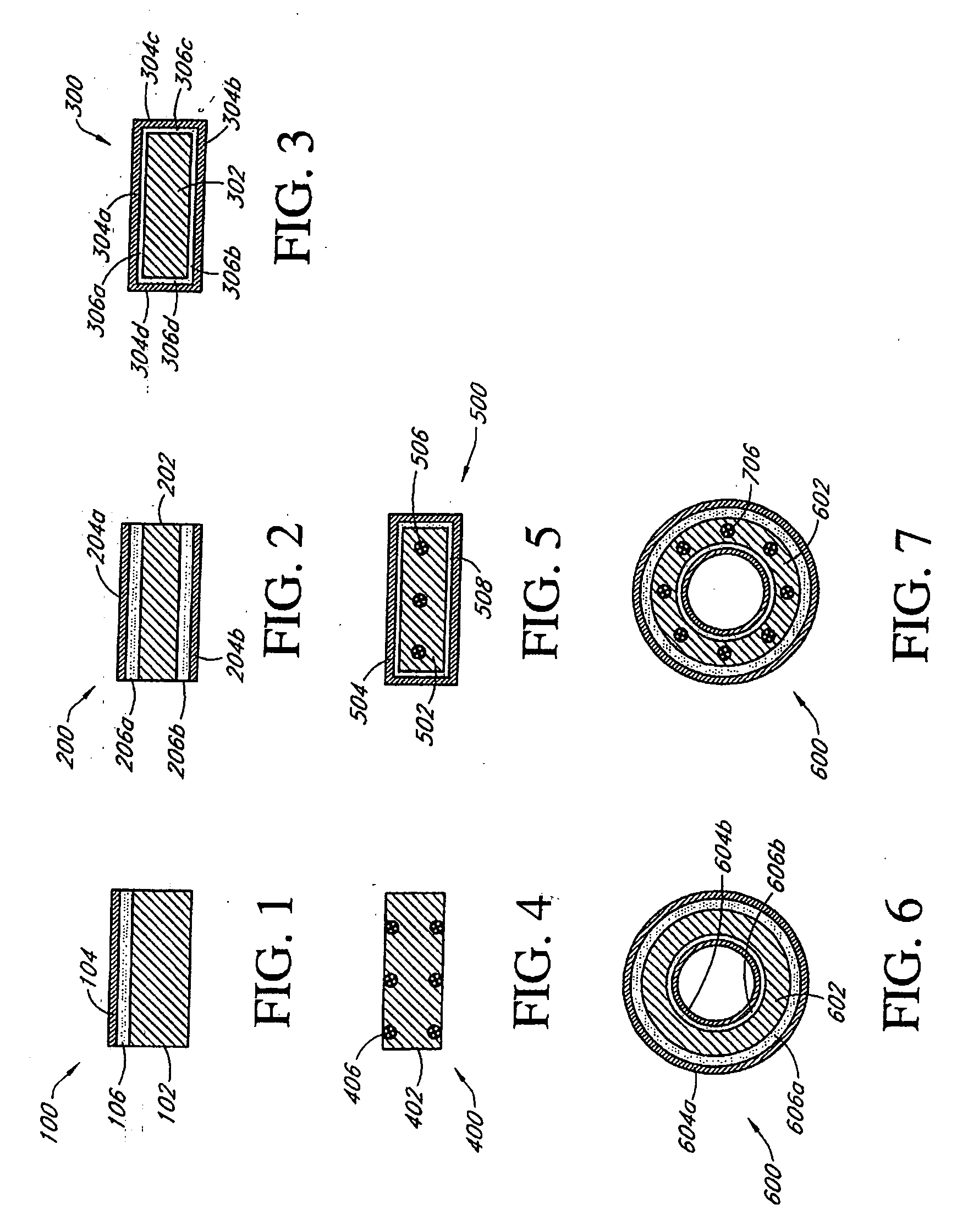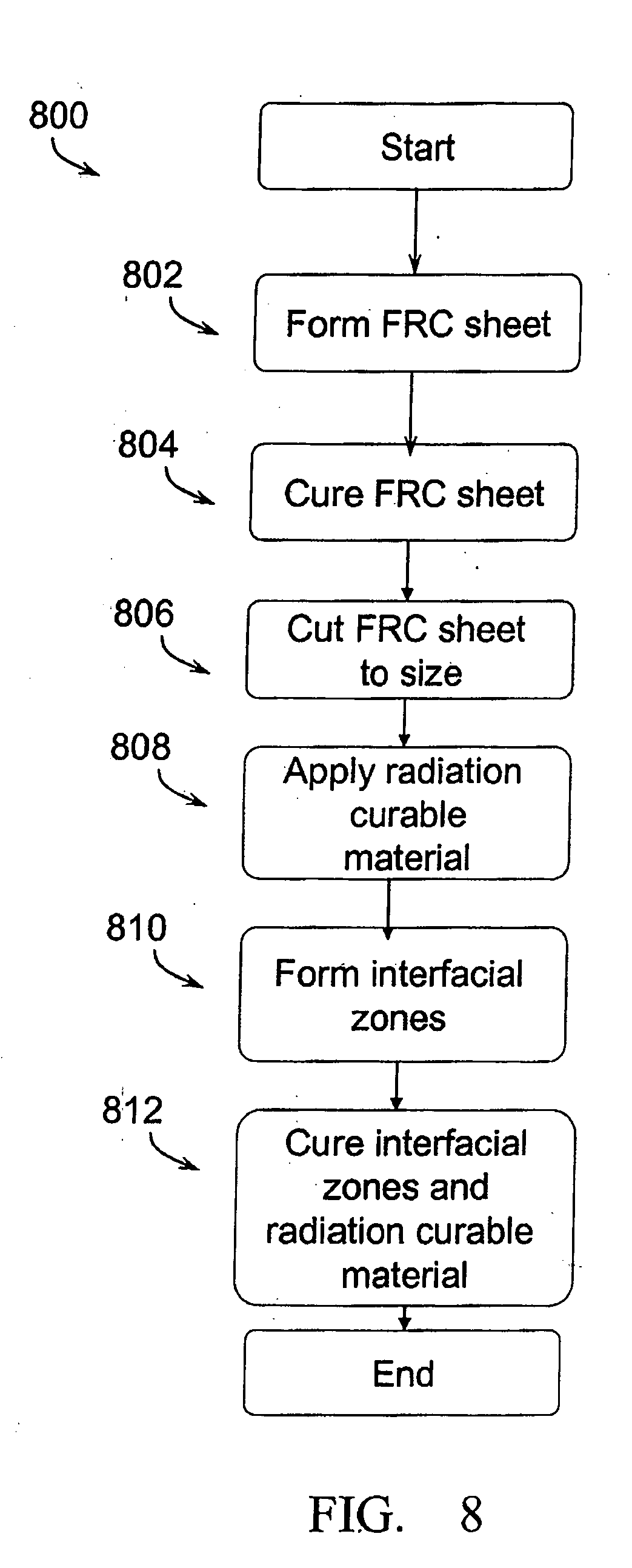Composite fiber cement article with radiation curable component
a technology of radiation curable components and fiber cement, applied in the field of composite fiber cement building articles, can solve the problems of frc building materials that can also be subject to physical damage, end products are often still susceptible to both physical and chemical modes of degradation, and achieve the effect of increasing the durability of building articles
- Summary
- Abstract
- Description
- Claims
- Application Information
AI Technical Summary
Benefits of technology
Problems solved by technology
Method used
Image
Examples
example 1
Medium Density Hatschek Sheet for External Application
[0071] A 7 / 16″ medium density fiber cement sheet was formed by the Hatschek process. The plank was of a type normally used for external applications. It was spray coated on all sides with an EB curable urethane acrylate resin having a solids content of about 80%, The resin was cured by exposure to EB radiation. Resin thickness was about 50 microns. The resin zone adhered strongly to the sheet and had a substantially even appearance. Inspection of a cross section of the material showed the presence of three distinct zones—the underlying fiber cement zone, the resin coating and the subsurface interfacial zone, which showed significant quantities of fibrous materials embedded in the resin; and the cured resin forming network of cured polymer the continuously interpenetrates the voids of the subsurface interfacial zone. The subsurface interfacial zone was integral with both the resin and fiber cement regions.
example 2
Low Density Extruded Article for External Application
[0072] A fiber cement article of nominal 2″×4″ rectangular cross section of a low density fiber cement of a formulation suitable for external application was extruded. The material was spray coated in the green state with a radiation curable resin and then cured on each surface using EB radiation A similar result was noted as above. There was formation of a good subsurface interfacial zone, not withstanding the use of a very high solids formulation. The green article was then air cured to yield an article with enhanced durability versus articles without such coatings.
example 3
Fiber Cement Articles Comprising Cellulose Fibers having an EB Curable Resin Coating
[0073] Sheets of unbleached kraft fiber were refined to a freeness of about 350 CSF and added to water such that a solution of about 11% fibers by weight is prepared. An aqueous dispersion of EB curable acrylic urethane was added to the fibers at a dosage rate of about 0.5% resin per weight of fiber. The fibers were then combined in solution with cement and ground silica to form fiber cement sheets of about 1 mm thickness. Radiation curable components in the sheets were cured using EB radiation while the fiber cement component of the sheet was maintained in a green state. These fiber cement sheets were then laminated to the top and bottom of a stack of green fiber cement sheets that did not contain radiation curable components to form a composite. The composite stack is cured in an autoclave at about 180C to further cure the fiber cement sheets. The resulting sheets were less permeable to water thro...
PUM
| Property | Measurement | Unit |
|---|---|---|
| thickness | aaaaa | aaaaa |
| pore size | aaaaa | aaaaa |
| pore size | aaaaa | aaaaa |
Abstract
Description
Claims
Application Information
 Login to View More
Login to View More - R&D
- Intellectual Property
- Life Sciences
- Materials
- Tech Scout
- Unparalleled Data Quality
- Higher Quality Content
- 60% Fewer Hallucinations
Browse by: Latest US Patents, China's latest patents, Technical Efficacy Thesaurus, Application Domain, Technology Topic, Popular Technical Reports.
© 2025 PatSnap. All rights reserved.Legal|Privacy policy|Modern Slavery Act Transparency Statement|Sitemap|About US| Contact US: help@patsnap.com



